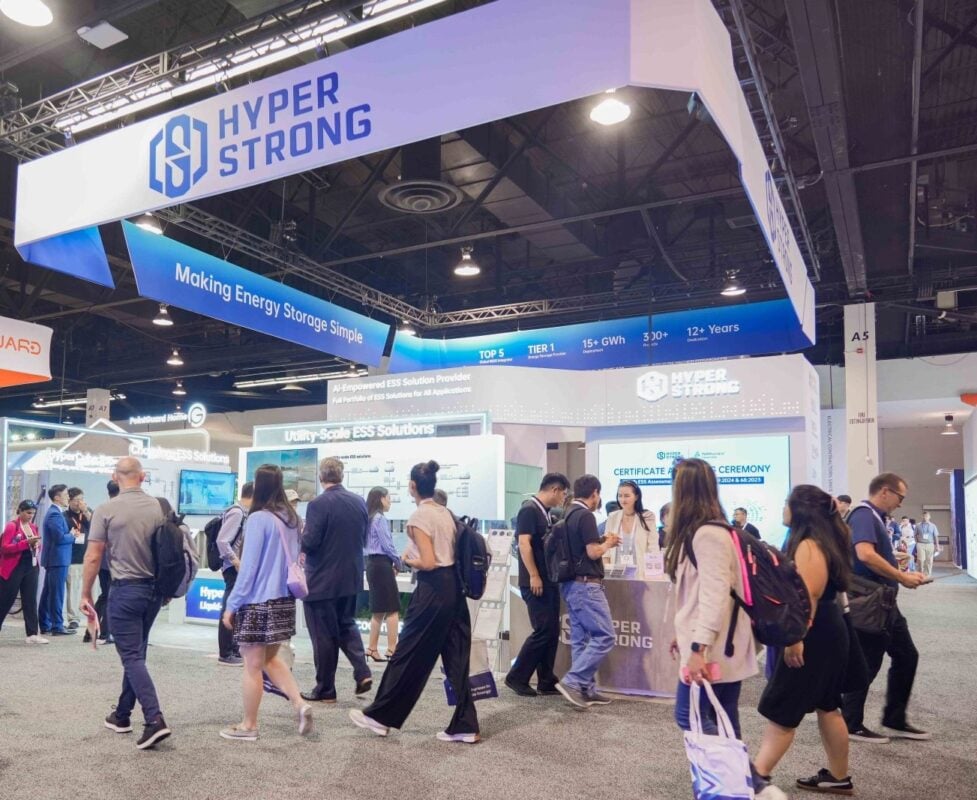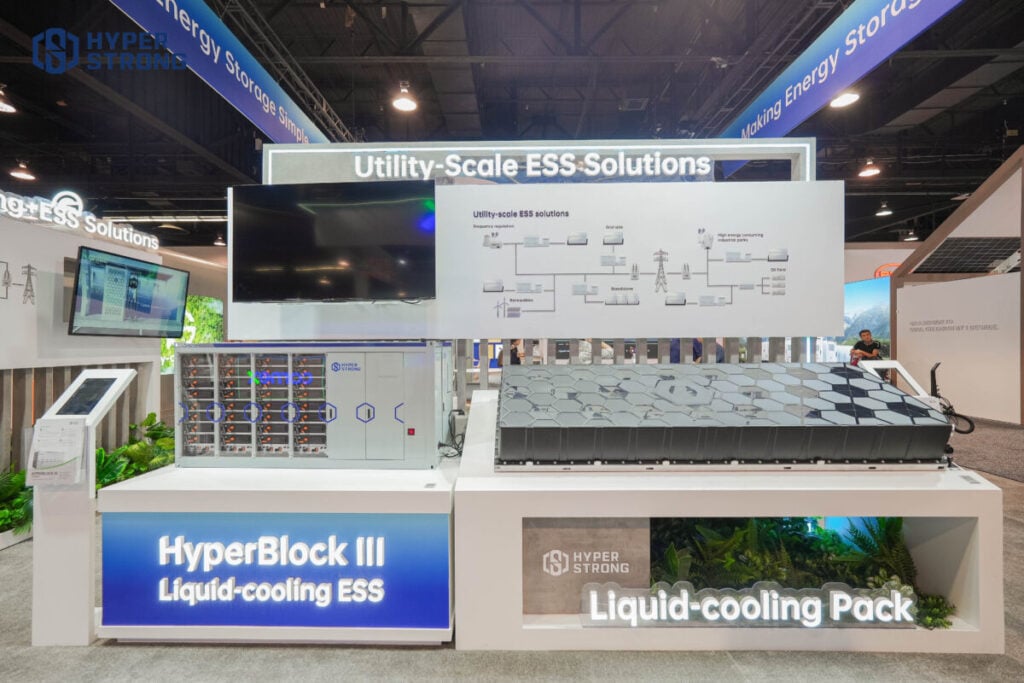
HyperStrong, a global leader in providing energy storage solutions, launched its smart, reliable and innovative products into the US market in 2023.
Speaking at this year’s RE+ clean energy trade event—with around 50,000 visitors, the largest show of its kind in the country—HyperStrong’s founder and CEO Dr. Jianhui Zhang tells us that the US urgently needs the kind of battery energy storage system (BESS) technology the company specialises in.
Enjoy 12 months of exclusive analysis
- Regular insight and analysis of the industry’s biggest developments
- In-depth interviews with the industry’s leading figures
- Annual digital subscription to the PV Tech Power journal
- Discounts on Solar Media’s portfolio of events, in-person and virtual
“The US market is unique. It puts a lot of emphasis on the quality, reliability, efficiency, and, of course, the cost-competitiveness of the whole system,” he says.
HyperStrong mainly focuses on utility-scale energy storage, with some behind-the-meter (BTM) technologies that include BESS-integrated electric vehicle (EV) charging and commercial & industrial application. By the third quarter this year, it had installed a cumulative 20GWh globally.
At RE+ this year, HyperStrong showcased HyperBlock III, a 5MWh liquid-cooled energy storage system optimised for utility-scale storage applications, with the AC version featuring an integrated 340kW liquid-cooled power conversion system (PCS).

The company was also introducing its R&D into grid-forming technologies for PCS, sometimes called ‘advanced inverters,’ which CEO Zhang says are “going to play a more and more important role in enhancing renewable energy integration into the grid.”
Other products in its range include HyperCube Pro, an innovative all-in-one EV charging-plus-storage system, developed in response to growing demand for EV infrastructure and consolidated in-house solid-state lithium iron phosphate (LFP) battery cells, drawing considerable attention at the show.
Multi-gigawatt-hour US project pipeline
Ranked in the top three of global BESS system integrators in terms of installed capacity in 2023 by S&P Global Commodity Insights, and with BloombergNEF Tier-1 energy storage supplier status, in 2023, HyperStrong held a more than 10% share of its home market in China and was the country’s number one supplier over three consecutive years from 2020-2022.
The company, founded in 2011 by CEO Dr. Zhang with two co-founders, entered the US market last year. Its first two local projects, which are in Texas, will be online early in 2025, while there is a “multi-gigawatt-hour pipeline” of projects in development on which HyperStrong will work with local developers and system integrators, Dr. Zhang says.
“All the big companies… everybody pays a lot of attention to the US market because it’s the second largest market, next to China,” Dr. Zhang says.
As well as being competitive, the US market is extremely demanding, and that means working closely with customers to understand their needs and building a truly localised presence. There’s also a need to keep innovating and scaling up, again, based on the market’s present and future requirements alike.
What is the US market looking for?
The US market is complex because it comprises various grid codes and infrastructure types, market conditions and technology applications across the different Regional Transmission Organisation (RTO) and Independent System Operator (ISO) territories.
At the same time, customers in the US demand standardised, modular and cost-effective solutions that are also customised and configurable to different market requirements and opportunities.
Dr. Zhang says HyperStrong has the flexibility in its product and technology range to serve those customers effectively.
“Since we start from project development all the way to operations and maintenance (O&M) to energy and power trading, we have the full product range to customise our solutions based on the particular needs of our clients,” Dr. Zhang says.
“From the cell to the power conversion system (PCS) to the battery management system (BMS), energy management system (EMS), whatever the customer needs, whatever our partner needs, we can provide the customised solutions to meet the final applications.”
Analysing data from 25 million cells on a daily basis
In a crowded and competitive field, HyperStrong’s strategy of localisation in the US and AI-based data analysis can be a differentiator, Dr. Zhang says.
The company is “establishing local teams, and local infrastructure,” he says, with a new headquarters of North America opening in Houston, Texas, along with staff training facilities and after-sales service functions.
With over 300 projects deployed worldwide representing 25 million battery cells from which HyperStrong analyses data every day, the company is able to tailor its projects to meet customer needs, whether in the Middle East, the UK, China, Australia or the US.
“In each area we work in, we customise our design, not only to deliver the standard product, but to work with our customers and see how we can meet their needs,” Dr. Zhang says.
“Our strategy also involves a very flexible approach to product integration. We work closely with local partners to customise our energy storage solutions. For example, we work with local software suppliers and EMS suppliers, with local or global PCS suppliers. Although we have our own technology, we can accommodate local partners.”
At RE+ in September, HyperStrong announced multiple collaborations with project developers, system integrator, service partners and certification agencies—covering the full value chain of the energy storage industry.
It’s an important part of the philosophy behind HyperStrong, founded by the CEO and his two co-founders, who spent time abroad before returning to China to start the company. Dr. Zhang himself holds a doctorate in electrical engineering from UC Berkeley.
He says HyperStrong’s philosophy is to work seamlessly with partners throughout the energy storage industry ecosystem. The company is also a big believer in innovation, investing in grid-forming inverters and solid-state batteries and leveraging big data and artificial intelligence to take the industry to the next level of performance and safety.

